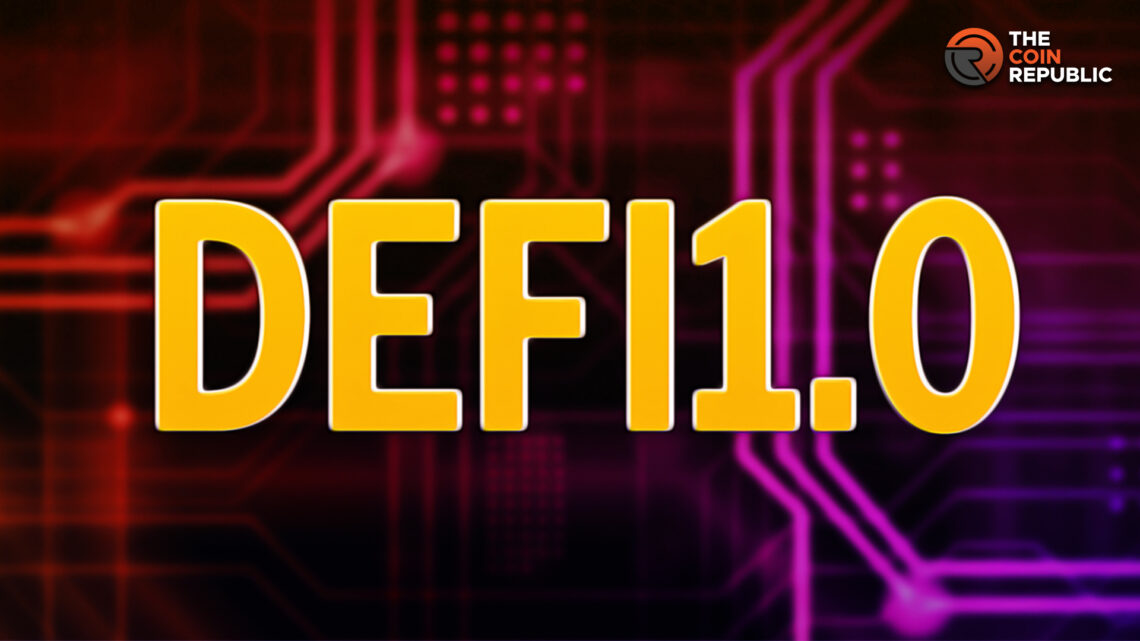- 1 Understanding DEFI and the tremendous growth
- 2 Introducing DEFI 1.0 and the cons that come with DEFI 1.0
Introducing Decentralized Finance
Decentralized Finance, also known as DeFi, is a guidance term for investment services on primary Ethereum and public blockchains. Accompanied by DeFi, investors can use the exchange to do things that banks support, including trade assets, buy insurance, lend and borrow money, trade derivatives, earn interest, and more since it’s faster and paperwork or third parties aren’t necessarily required. Generally, just like cryptocurrencies, DeFi is universal, pseudonymous, peer-to-peer (this means that two people can do it directly, and it’s not conveyed on a centralized system), and it’s open to all.
The sphere of Decentralized Finance (DeFi) has witnessed enormous development and revolution since its initiation in 2018. With new security features, programs, and continuously emerging applications, it’s important to recognize the perspective of the revolution cycle. We’ll take you through the main swings and evolution determining this space for skillful traders and investors of crypto who look to carry on with what’s trending in the DeFi landscape.
Although there is no exact meaning or definition of DeFi 1.0, it was the primary phase of decentralized finance (DeFi), and development paid heed with the establishment of constituting blocks for investment services on the blockchain. DeFi has demonstrated itself to be exceedingly popular, with a value of over $270 Billion by 2021. Its high yield of more than what banks and other traditional financial institutions make certainly attracted investors and users globally.
Intro to DeFi 1.0 and the cons
The tremendous growth of DeFi 1.0 happened in August 2020, during the “DeFi summer.” DeFi 1.0 mostly occurred on the Ethereum blockchain; this issue was due to either expensive or slow DeFi transactions that were not consistent. With the coming of stablecoins like Tether (USDT), USD Coin (USDC), and DAI, a solid store of value and easier means of peer-to-peer transactions in the DeFi environment were brought forth.
The invention of decentralized exchanges (DEXs), similar to Uniswap and Kyber Network, enables peer-to-peer trading without being obliged to centralize intermediaries.
The advent of loans and peer-to-peer platforms like MakerDAO Compound and AAVE made it easier for users to earn interest on their crypto assets.
Yield Farming and Liquidity earnings were introduced, encouraging users to supply liquidity to DeFi platforms by letting them earn governance tokens. The reason why Total Value Locked (TVL) escalated from hundreds of millions to tens of billions was a driver of innovation.
At the moment in the DeFi ecosystem, money is accounted for and owned by those who frequently leave one security for another that provides a better bounty, consequently establishing a liquidity that’s not stable on DeFi protocols.
Centrifugal power structures, lack of ownership of funds, and barriers to entry were the major issues that cried out for an improved financial system. Tensions with stablecoins are another trouble that DeFi is facing. They are totally important to the system and come with some big problems.
Like any other software, DeFi applications are vulnerable to exploits and hacks. Hackers can cause imperfections in DeFi applications and steal money or exploit monetary transactions.

Andrew is a blockchain developer who developed his interest in cryptocurrencies while pursuing his post-graduation major in blockchain development. He is a keen observer of details and shares his passion for writing, along with coding. His backend knowledge about blockchain helps him give a unique perspective to his writing skills, and a reliable craft at explaining the concepts such as blockchain programming, languages and token minting. He also frequently shares technical details and performance indicators of ICOs and IDOs.


 Home
Home News
News






